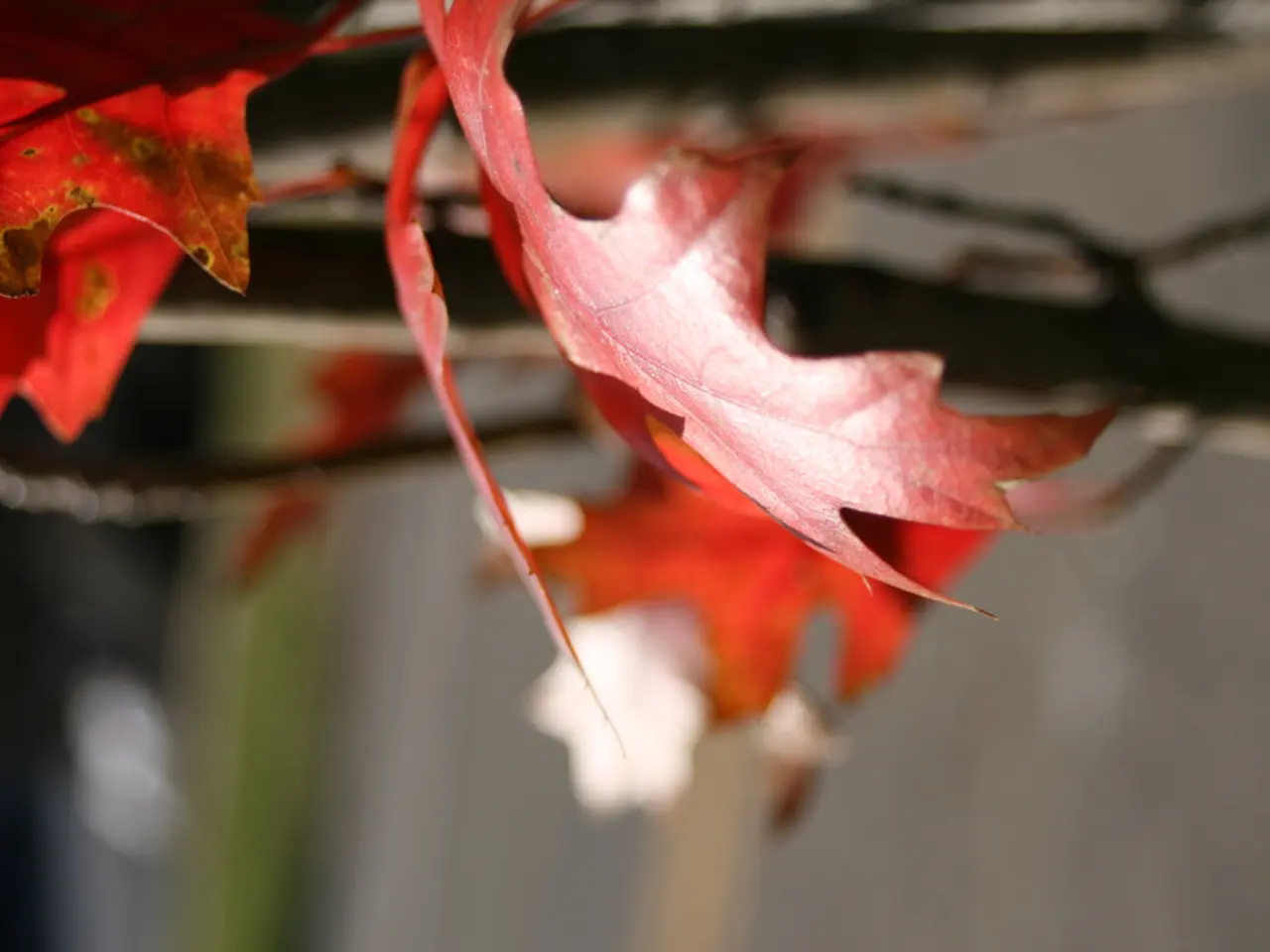Maple Tree Warning Signs in August: What You Should Know
In the heart of summer, maple trees across various regions are displaying signs of fall, with leaves turning colors prematurely. This phenomenon is primarily attributed to stress factors, particularly excessive soil moisture or flooding, which negatively impact the root systems of these trees.
According to Robin Trott, a University of Minnesota Extension Educator in Douglas County, when maple roots are submerged in soggy or flooded soil, they struggle to get enough oxygen, leading to poor nutrient uptake. As a result, maples may shed leaves prematurely or alter leaf pigments, creating a fall-like spectacle even in midsummer [1][2].
Other contributing factors to this early foliage color change include drought or temperature fluctuations, wildfire smoke reducing sunlight, and species-specific traits. A dry spring followed by unusual weather patterns can stress trees, as can wildfire smoke that trick trees into thinking daylight is shorter, causing early color changes [3]. Some maple varieties naturally change color earlier than others, though this is less common.
To help maple trees cope and potentially reduce early foliage color change, there are several actions homeowners can take:
- Avoid overwatering and improve drainage to prevent roots from sitting in water for extended periods [1][2].
- Apply mulch around the tree base to retain soil moisture while preventing oversaturation [5].
- Water trees properly during dry spells, particularly when soil is not saturated, to support healthy metabolism [5].
- Prunune damaged or diseased branches carefully to encourage overall tree health [5].
- Avoid nitrogen-heavy fertilizers as they may promote excessive green growth but don’t fix stress-related early coloring [5].
In essence, ensuring well-drained soil and balanced moisture levels is the best action to support stressed maple trees showing early summer color changes and help prevent longer-term damage [1][2].
For more information or to consult a certified arborist, Robin Trott, University of Minnesota Extension Educator, can be reached at [email protected]. Soil testing can also help identify nutrient issues that may be causing leaf discoloration.
[1] Yard and Garden News [2] University of Minnesota Extension [3] USDA Forest Service [4] The Weather Channel [5] Arbor Day Foundation
- Embracing environmental-science insights can help us understand the environmental stressors linked to climate-change, such as irregular rainfall patterns and excessive soil moisture, which impact the health and lifecycle of trees like maples.
- A change in lifestyle practices at home, like improving drainage, watering trees appropriately, and using balanced fertilizers, can contribute positively to the well-being of maple trees and reduce the occurrences of fall foliage in the middle of summer, a common sight due to these environmental challenges.
- Gardening enthusiasts can make a difference by adopting these practical measures to support the environmental-science focus of maintaining healthy ecosystems, where trees play a crucial role in carbon sequestration and climate-change mitigation.




